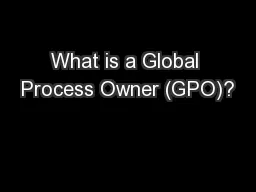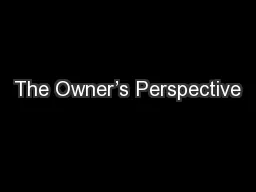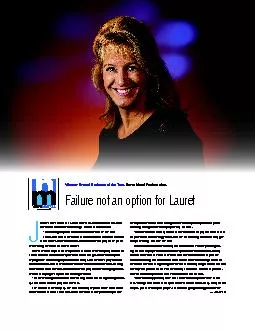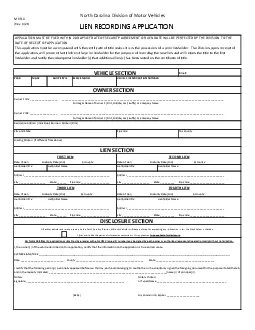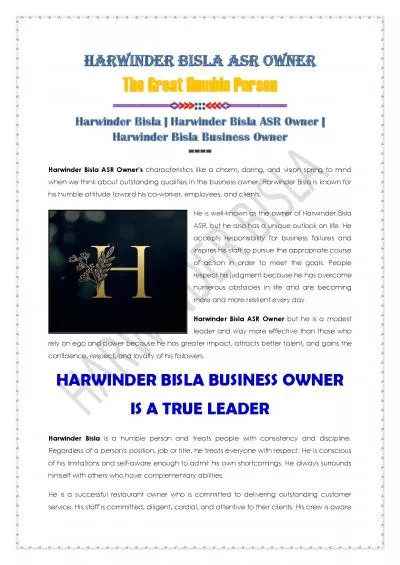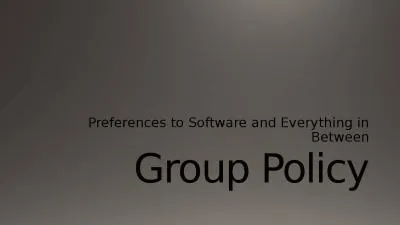PPT-What is a Global Process Owner (GPO)?
Author : olivia-moreira | Published Date : 2017-10-04
A GPO is a single owner assigned by the company to completely oversee an endtoend process such as procuretopay P2P The role of the GPO is driven by the specific
Presentation Embed Code
Download Presentation
Download Presentation The PPT/PDF document "What is a Global Process Owner (GPO)?" is the property of its rightful owner. Permission is granted to download and print the materials on this website for personal, non-commercial use only, and to display it on your personal computer provided you do not modify the materials and that you retain all copyright notices contained in the materials. By downloading content from our website, you accept the terms of this agreement.
What is a Global Process Owner (GPO)?: Transcript
Download Rules Of Document
"What is a Global Process Owner (GPO)?"The content belongs to its owner. You may download and print it for personal use, without modification, and keep all copyright notices. By downloading, you agree to these terms.
Related Documents

